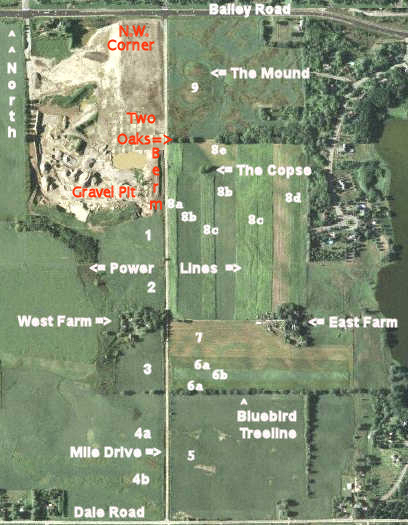
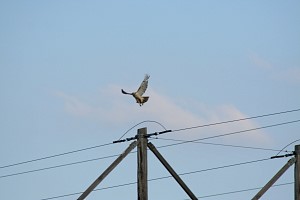 Although red-tailed hawks are commonly seen soaring, they are primarily perchhunters,
and only infrequently hunt from soaring, kiting, or powered flight. Elevated
perch sites appear to be a necessary component of suitable hunting habitat. A study
indicated that red-tailed hawks preferred to hunt in areas with perches
even though many of these areas had lower prey density than more open areas.
Although red-tailed hawks are commonly seen soaring, they are primarily perchhunters,
and only infrequently hunt from soaring, kiting, or powered flight. Elevated
perch sites appear to be a necessary component of suitable hunting habitat. A study
indicated that red-tailed hawks preferred to hunt in areas with perches
even though many of these areas had lower prey density than more open areas.
|
|
The fact that they tend to perch and soar in open
habitats and tolerate human-dominated environments makes them one of the most
frequently observed raptors in the region.
Red-tailed hawks also have benefited from protection from human persecution. As
recently as the middle of the 20th Century, the species was blamed for losses of
poultry and was labeled the "chicken hawk". As a result, redtails were commonly
shot. The red-tailed hawk’s propensity to perch in the open made it particularly
vulnerable to being shot.
The red-tailed hawk is a grouping of 14 sub-species, each of which is more or less specific
to a geographical area, and differs from the others in size, markings etc.
Coloring varies (even within sub-species) from this very dark appearance to a very pale form,
so field identification is more satisfactory from the birds' behaviour than from appearance alone.
The red-tailed hawk is a most opportunistic feeder. Its diet is varied, with rabbits, mice,
muskrats, and squirrels being preferred. Where there are large numbers of pheasant on this site, these
become the food of choice in spring and summer. I have a picture of this hawk carrying
off a pheasant. Other prey taken includes snakes and lizards, opossums, moles, weasels,
amphibians, and other birds (like pigeons, quail, crows, ducks, and woodpeckers).
A red-tailed hawk can spot a mouse from a height of 100 feet.
The hawk eats the entire prey, regurgitating inedible parts like fur, feathers, teeth,
and bone.
hawk carrying pheasant
|
|
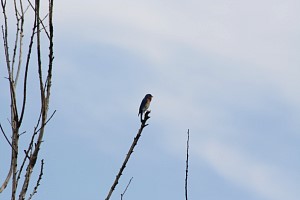
Eastern bluebird sitting on the end of a dead branch near Bluebird Treeline.
Return to Birds
|
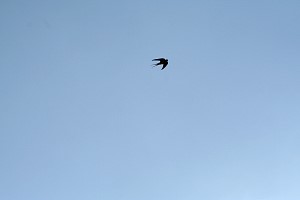
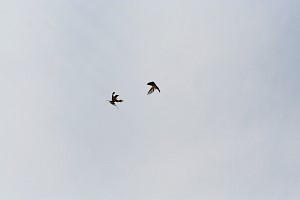
Fork-tailed Barn swallows are acrobatic fliers. their sudden twists and turns indicate they
are hunting. Enlarge the right-most picture and see how the bird on the left
uses its tail as an air brake.
Return to Birds
|
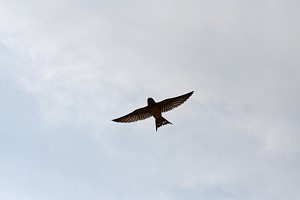
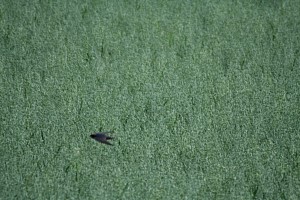
As I walk along the gravel road I cause insects to take wing. The Barn swallows
swoop by to catch the bugs. The right-most picture shows a bird speeding over the
oats looking for prey.
|
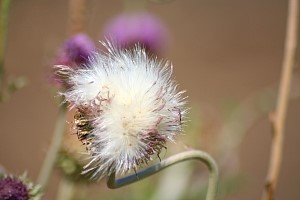
A nodding thistle head has already gone to seed.
|
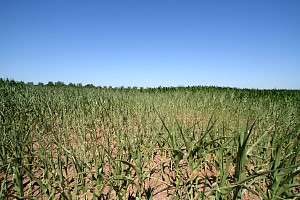
The unusually hot and dry summer weather stunts the corn.
|
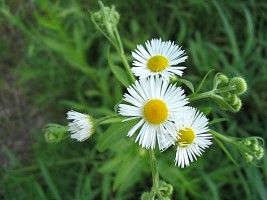
Daisy Fleabane (Erigeron annuus) is native to the midwest.
Ancient Europeans believed that the odor of this genus repelled fleas, thus the name fleabane. This seems to have no basis in fact.
Daisy Fleabane is a serious problem in alfalfa, especially that grown for horses.
Return to Flora
|
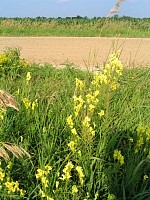
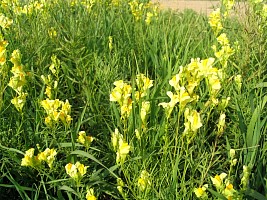
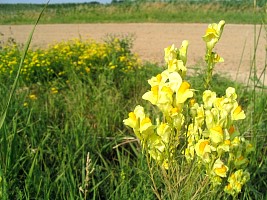 Butter and Eggs, (Linaria vulgaris ) also called Toadflax, is imported from Europe.
This plant has the ability to adapt to various site conditions, in Minnesota it grows on
gravelly to sandy soil along roadsides, railroad yards, waste places, dry fields, pastures and croplands.
It competes well against less aggressive native plants in gravelly and sandy soils; its
capability to also spread vegetatively is largely responsible for its invasive behavior.
Return to Flora
Butter and Eggs, (Linaria vulgaris ) also called Toadflax, is imported from Europe.
This plant has the ability to adapt to various site conditions, in Minnesota it grows on
gravelly to sandy soil along roadsides, railroad yards, waste places, dry fields, pastures and croplands.
It competes well against less aggressive native plants in gravelly and sandy soils; its
capability to also spread vegetatively is largely responsible for its invasive behavior.
Return to Flora
|
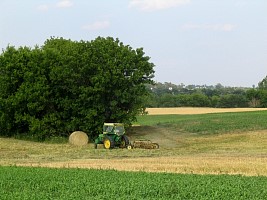
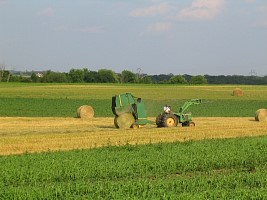
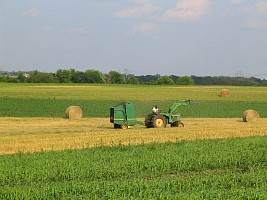 They are busy roll-bailing the hay in field #8. The
left-most picture shows the son-in-law raking the hay into new windrows using
tractor number one. The other
two show the roll bailer behind tractor number two.
They are busy roll-bailing the hay in field #8. The
left-most picture shows the son-in-law raking the hay into new windrows using
tractor number one. The other
two show the roll bailer behind tractor number two.
|
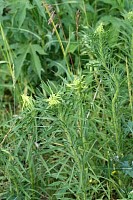
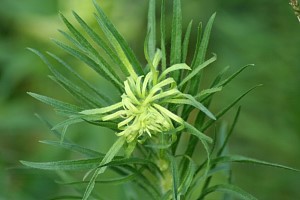
I have been unable to find out what this plant is.
|
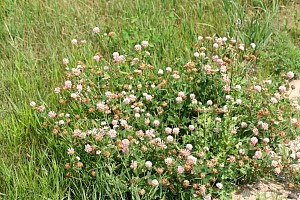
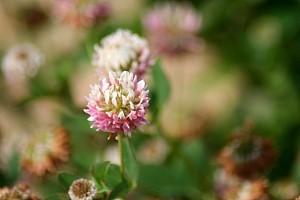
Alsike clover is still blooming.
|